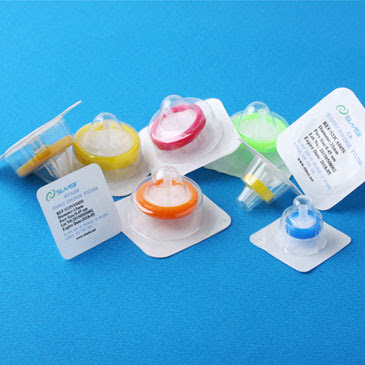A hydrophobic PVDF syringe filter is the most
popular and best choice for filtering aqueous solutions and product quality.
The purpose of the creation of PVDF Syringe Filters is to
bring the highest performance level and purity to the research. A variety of
membranes offer purification solutions and separation for the majority of the
laboratory requirement. It is extremely low protein-binding of Polyvinylidene
fluoride for filtration of a mild organic and non-aggressive aqueous solution.
Although, it is essential to recover to maximizing protein with excellent
chemical stability.
Features of PVDF
Syringe Filters
The PVDF syringe filters have possessed high flow
rates and low protein binding. While clarifying and sterilizing biological
filtration solution, working with aqueous samples, performing HPLC
applications. PVDF small filter devices have excellent stability of
chemicals.
· Hydrophobic Membrane: It
has an excellent ability to resist water-wetting and repel water utilized as
vent filters for water repellent vent for electrical enclosures. Including,
Polypropylene and PTFE a variety of hydrophobic membranes to protect the device
of vacuum pumps from water aspiration.
· No Moisture Absorption: The
filtration step of the syringe is before injection helps to assure more
reliable and consistent results. It also supports protecting the delicate
laboratory instruments for prolongs column life. Filters are generally used for
biological filtration and desired protein recovery for no moisture
absorption.
· Chemical Resistance: The
PVDF Syringe Filter housings are manufactured from low-extractable
polypropylene resins, solvent-resistant specially selected for broad chemical
compatibility with standard sample matrices of HPLC. The potential binding
interactions in the sample components and the membrane provides stable chemical
resistance.
Advantages of PVDF Syringe Filters
- PVDF syringe filters are very beneficial in every
way, especially for patient’s protection. Here are some essential advantages of
syringe filters are mentioned below.
- The filters are best-suited
choices to complete high-performance needs with higher operating pressures and
faster flow rates.
- For minimum sample losses, it has
low absorption membranes and low extractable.
- The PVDF Syringe Filters have the best quality for aqueous solutions and ideals for sterilizing organic solvents.
Final Thoughts
The filtration process is very significant for patient safety, and it facilitates
better reliability testing with faster flow rates. Though, the higher product
quality of PVDF Syringe Filters helps
to decrease the investigation costs from a long-term perspective to expand the
apparatus life. It is a hydrophobic solvent-resistant membrane, higher
operating pressures, and chemical stability.



Comments
Post a Comment